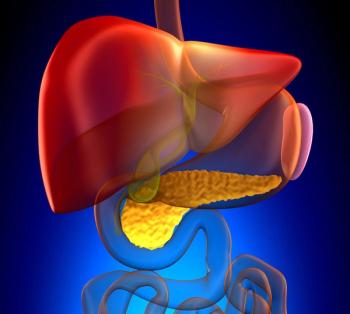
Annual Cancer Report: Death Rates on the Decline
Cancer death rates continue to steadily decline, according to the annual cancer statistics report from the American Cancer Society.
Cancer death rates continue to steadily decline, according to the annual cancer statistics report from the American Cancer Society (ACS)
Overall, the risk of dying from cancer decreased by 20% in the last 2 decades, which means that 1,340,400 cancer deaths have been avoided since the early 1990s. The combined cancer death rate is currently 171.8 in 100,000 people compared to a peak rate of 215 per 100,000 in 1991.
“These data indicate continued progress against cancer, which is reflected in the sustained decline in cancer death rates of about 1.5% per year,” said Rebecca Siegel, MPH, of the surveillance and health services research group at the ACS, and lead author of the study.
The analysis finds that for African-American men, the risk of dying has declined by about 50%. Still, African-American men have the highest rates of cancer incidence and deaths compared with all other ethnicities in the United States. For example, the rates of cancer diagnosis for African-American men are about double that of Asian Americans, the group with the lowest rates.
“We were surprised to find that over the past 2 decades, the largest declines in cancer death rates across all age groups have been in black men,” said Siegel. “Death rates in middle-aged black men in 2010 were about half what they were in 1991, compared to reductions of about 30% among middle-aged white men, and women of both races.”
Five-year cancer survival rates remain lower for African Americans as compared with Caucasians for all cancers. The disparities are attributed to diagnosis at a later stage, comorbidities, and treatment type, rather than cancer biology.
A total of 585,720 people (310,010 men and 275,710 women) will die of cancer in 2014 in the United States-that’s about 1,600 per day. Cancer death rates decreased per year by 1.8% in men and 1.4% in women. African-American men had the largest decline in rates for every 10-year age group.
The most common cause of cancer deaths are still lung, colon, breast, and pancreatic cancers-one in four people who die of cancer will die of lung cancer. Twenty-eight percent of cancer deaths in men and 26% in women are due to lung cancer.
According to this year’s report, 1,665,540 new cases of cancer will be diagnosed. Cancer incidence rates declined by 0.6% per year in the last 5 years for men and were stable in women.
Prostate, lung, and colon cancers are estimated to account for approximately half of all newly diagnosed cancers among men. For women, the common cancers that will account for half of those diagnosed will be lung, colon, and breast cancers-29% of new cancers are estimated to be those of the breast.
The authors attribute declines in rates of colon cancer (more than 4% from 2008 to 2010) to increased rates of colonoscopy screenings. Prostate cancer is also on the decline since 2000, but rates tend to fluctuate year to year.
Not all cancer types are on the decline: Incidence rates of melanoma, esophageal, thyroid, kidney, anal, liver, pancreatic, and human papillomavirus-related oropharyngeal cancers are increasing. The largest increase is in thyroid and liver cancers.
The estimated probability of being diagnosed with cancer is slightly higher for men than women: 44% vs 38%, respectively. But, women have a slightly higher chance of developing cancer before the age of 65 since the median age of diagnosis of breast cancer is 61 years compared with 66 years for the diagnosis of prostate cancer.
“Although we have the knowledge to accelerate the reduction in cancer death rates, this can only be achieved by applying proven cancer control strategies to all individuals, particularly those in the lowest socioeconomic groups,” said Siegel. She also noted that the disparity gap between the cancer death rates of the poorest and wealthiest Americans may be narrowed as a result of access to care through the Affordable Care Act.
Data from the Surveillance, Epidemiology, and End Results Program of the National Cancer Institute (NCI) and the National Program of Cancer Registries from the Centers for Disease Control and Prevention (CDC) were used to analyze population-based incidence. Data on mortality were obtained from the CDC’s National Center for Health Statistics.
In the complementary Annual Report to the Nation on the Status of Cancer, 1975–2010,
“There are distinct features of both of these reports,” said Brenda Edwards, PhD, of the division of cancer control and population sciences at the NCI, and first author of the Annual Report to the Nation on the Status of Cancer, 1975–2010. Edwards pointed out that the report from the ACS uses statistical modeling to provide estimates of the number of cancer cases and deaths for 2014 in the United States as a whole.
“The ACS report also provides utility by grouping the data by sex, age group, and cancer type,” said Edwards. “The analysis also highlights the local data by state-so there is both a state-level and national-level analysis.”
Newsletter
Stay up to date on recent advances in the multidisciplinary approach to cancer.


















































































